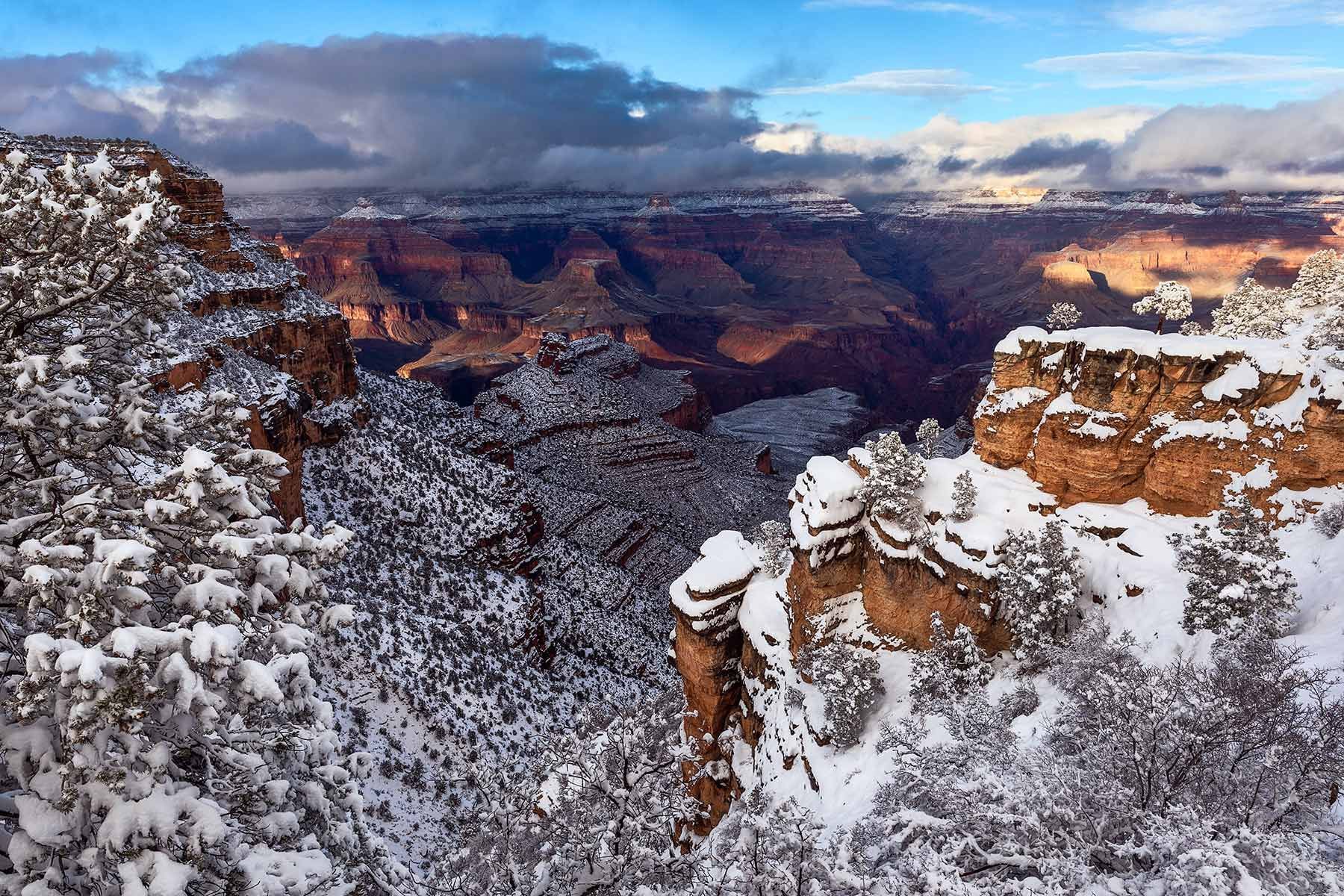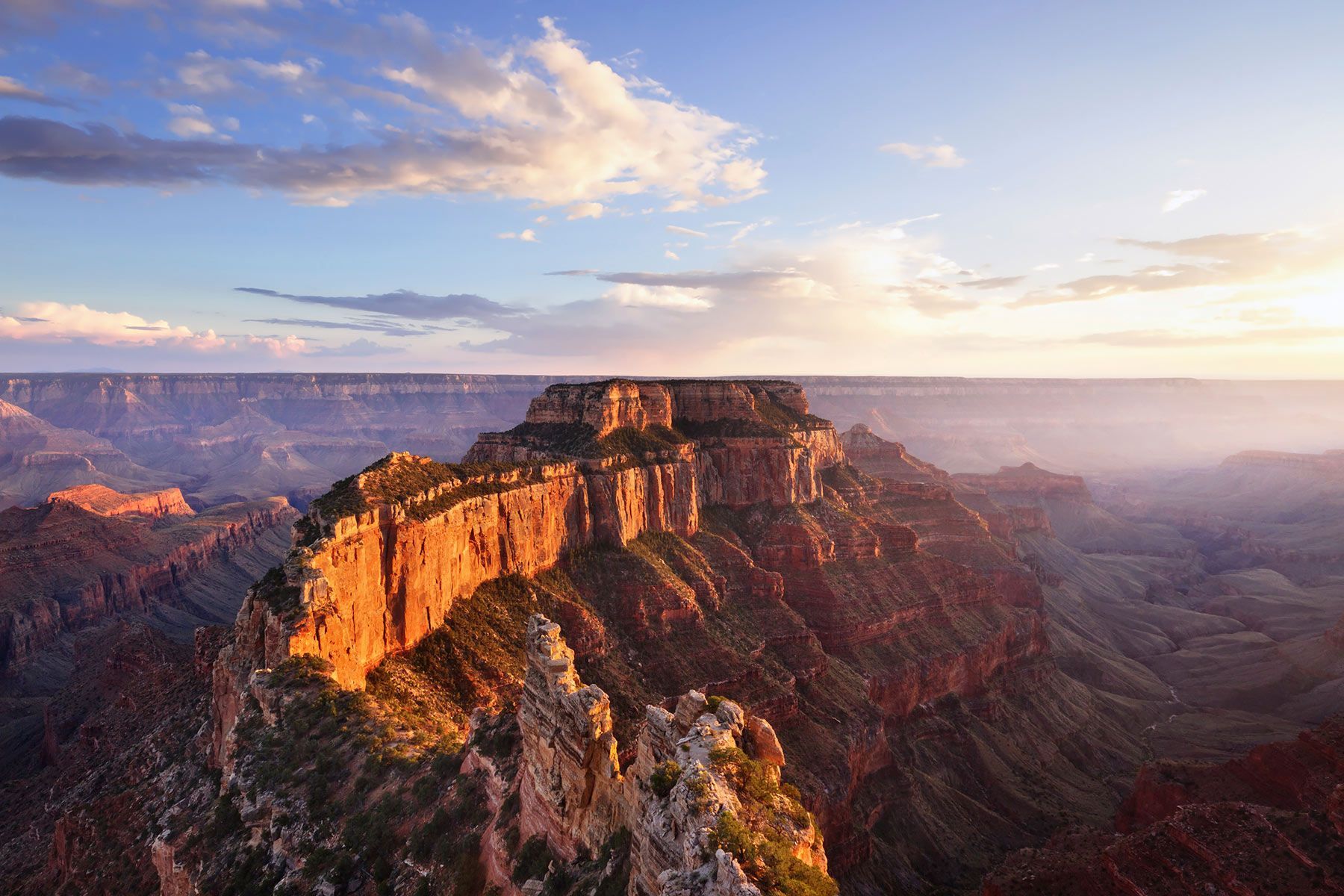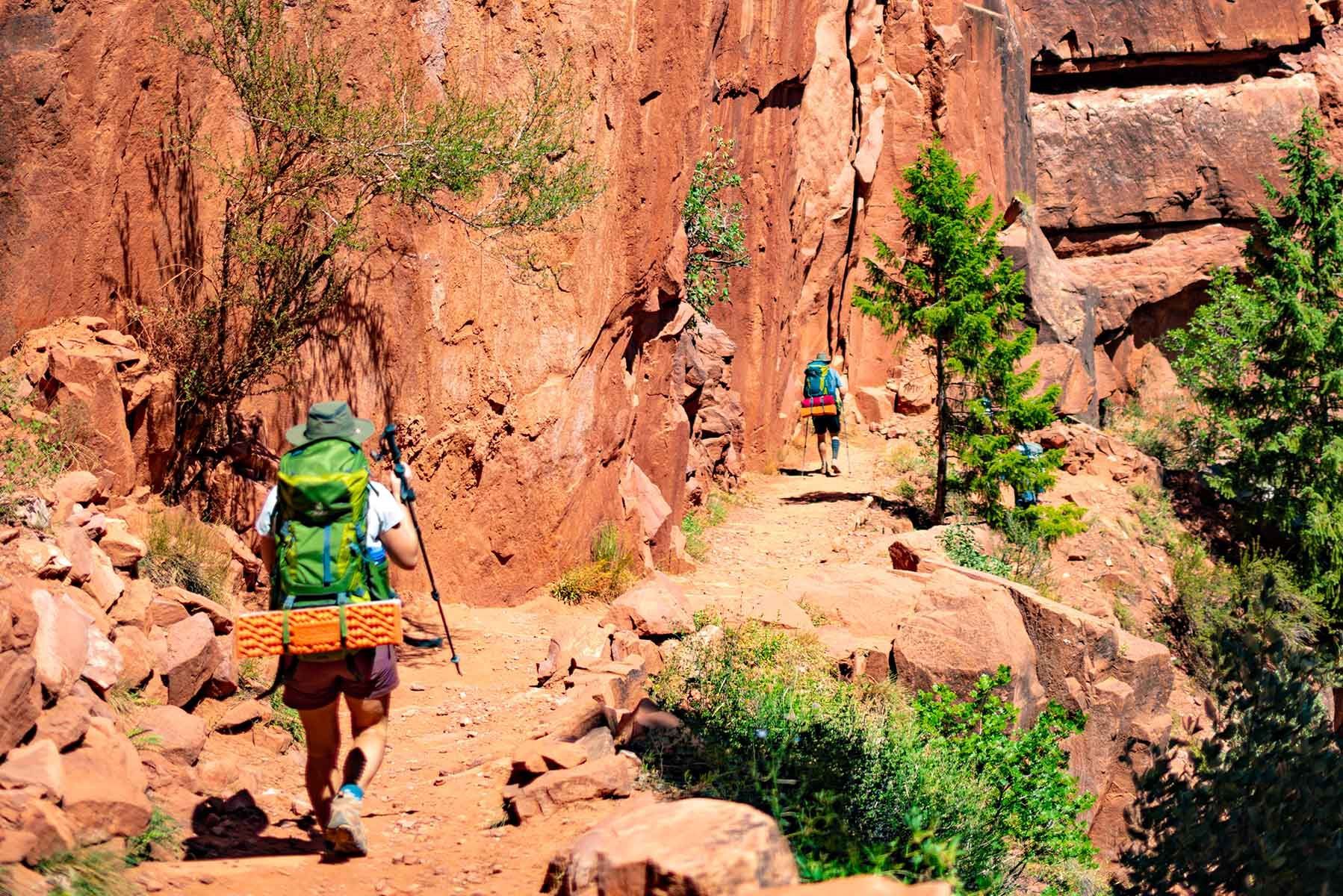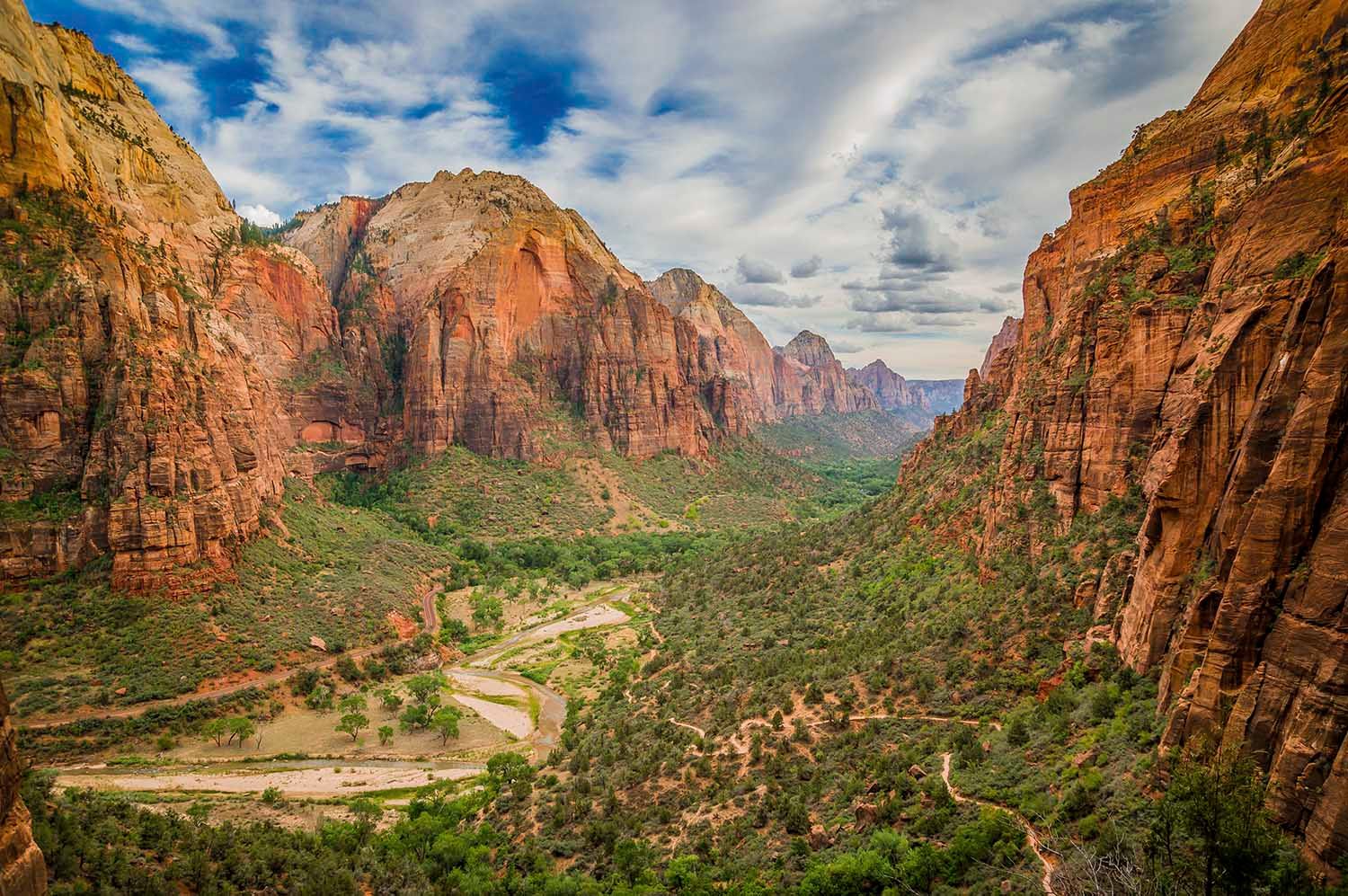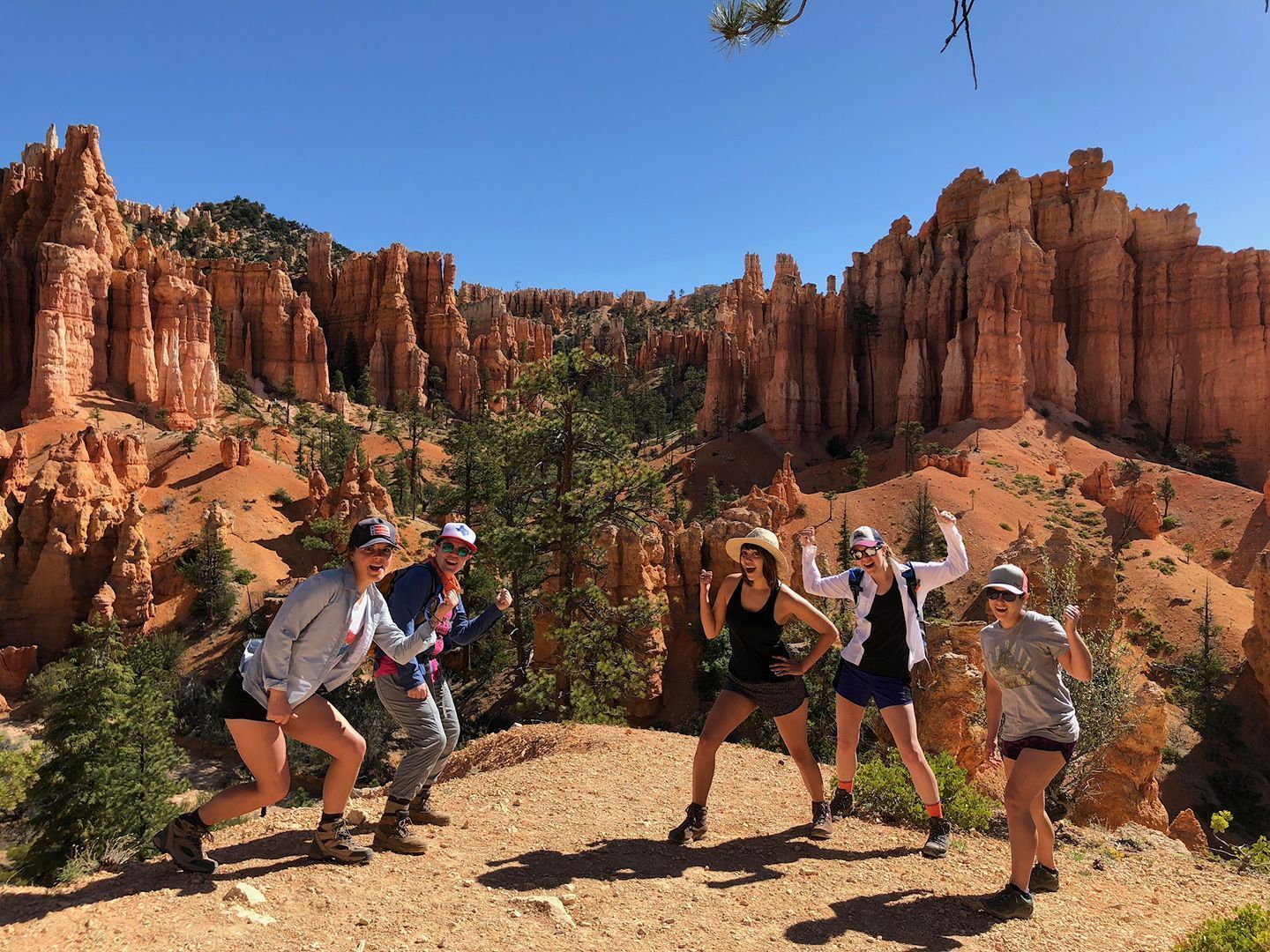Grand Canyon Tours in the Fall
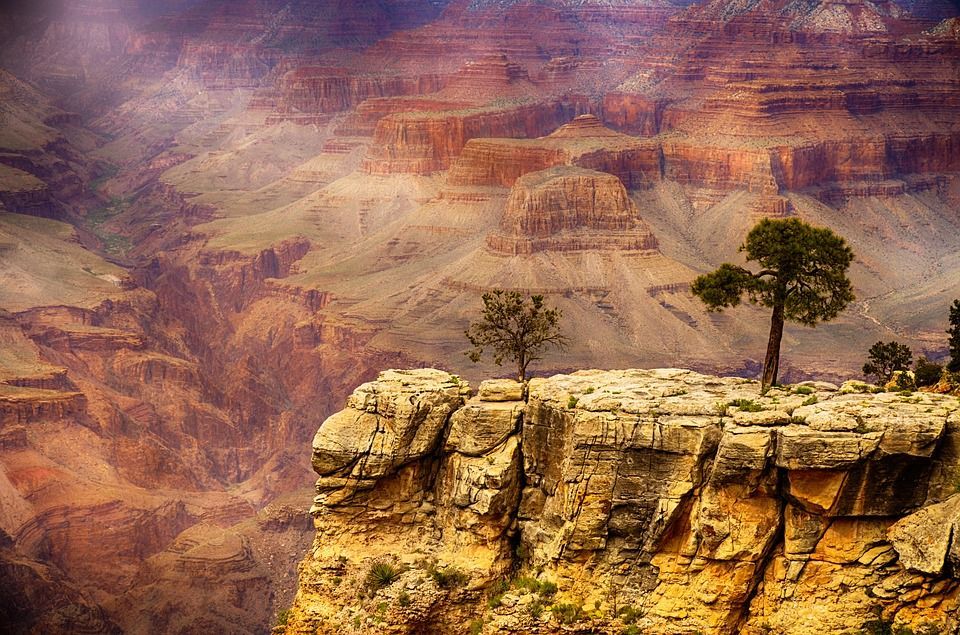
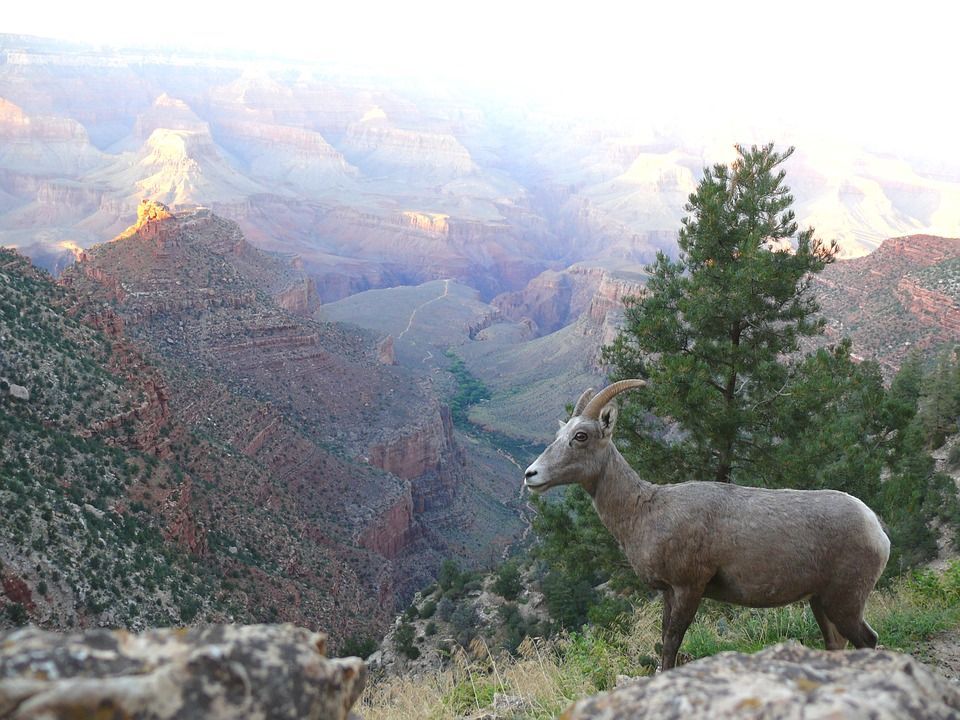
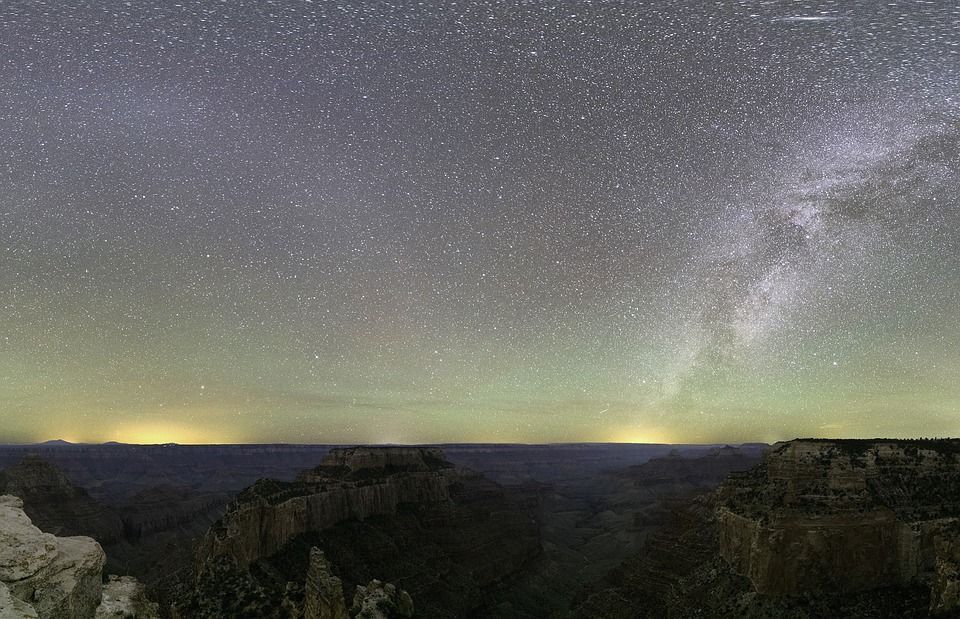
Key Takeaways
- Fall is one of the best times for Grand Canyon tours, offering cooler temperatures, fewer crowds, and striking color contrasts that rival the Northeast’s famous foliage.
- Photographers love autumn in the Grand Canyon — the soft seasonal light and vivid hues of the canyon walls make for some of the year’s most breathtaking images.
- The North Rim showcases unique fall foliage, with golden aspens and red Rocky Mountain maples standing out against deep green pine and fir forests.
- Clear, star-filled night skies and the Harvest Moon make fall an ideal season for stargazing and nighttime photography at the canyon.
- Perfect hiking conditions return in mid-September, with daytime temps in the 70s by October — great for backpacking while avoiding the summer heat.
We here in the Southwest know the score. The Northeast and the mountains get all the ink when it comes to fall destinations in the travel guides. We’re used to it. But you know what? Those sugar maples and oaks and birches put on the same show every year. Grand Canyon Tours in autumn, when the sun dips lower in the sky, the colors of the mile-deep walls and rock formations are just as vivid as those mountain forests – and they change every day.
Also, don’t think the desert Southwest is without its own autumnal arboreal displays, especially on the North Rim of the Grand Canyon. The gold leaves of the aspens and deep reds of Rocky Mountain maples look magnificent against our stately pine and fir forests. The soft light of fall is intoxicating to Grand Canyon backpackers who also happen to be shutterbugs. Ever wonder when most of those spellbinding photographs of the Grand Canyon that appear in magazines are taken? In the fall.
The above does not even begin to consider the Harvest moon at night, so clear and bright that you could read a star map by its light. And if the moon is not out, those stars will put on an unforgettable light show of their own. After all, with no human intervention for many hundreds of miles, the clear skies of the Grand Canyon are one of the country’s most sought after skyscapes.
As the searing summer heat of the inner canyon abates in mid-September, beautiful hiking conditions return. The cool fall temperatures make hiking the Grand Canyon a delight – perhaps the only drawback is that you won’t be able to pack as lightly as you do in the summer. A pair of thermal long johns might have to be added to your pack list to go with that mug of hot chocolate if snow comes early to the upper reaches of the canyon. On the other hand, the weather is often drier in the autumn so there is less rain gear to deal with.
Those temperatures down in the canyon, by mid-October, are in the 70s. Backpacking into the gorge in the autumn is typically conducted at a quick-stepping pace that is a refreshing break from the higher, rest-demanding temperatures of just a couple months before. Even the big horn sheep seem to know to come out of hiding this time of year, and are much more active around the trails, for your pleasure.
So don’t fall for the hype of the Leaf-Peeping industrial complex in the north this fall. Come
backpack where the real American colors are, the Grand Canyon.
Frequently Asked Questions
Discover why fall is one of the most breathtaking and comfortable times to explore the Grand Canyon, from its golden aspens to its cool hiking weather.
When is the best time to visit the Grand Canyon in the fall?
The ideal time to visit the Grand Canyon in the fall is from mid-September through late October. During this period, daytime temperatures are comfortable for hiking, the summer crowds thin out, and the canyon walls glow with deep, changing colors under softer autumn light.
What does the Grand Canyon look like in autumn?
In autumn, the Grand Canyon transforms with golden aspens, red Rocky Mountain maples, and warm light that enhances the colors of the rock formations. The North Rim especially bursts with color, while the softer sunlight and cooler air create vivid contrasts perfect for photography.
Is fall a good time for hiking the Grand Canyon?
Yes, fall offers some of the best hiking conditions of the year. The summer heat fades by mid-September, bringing cooler, dry air and comfortable temperatures in the 70s down in the canyon. Trails are quieter, and wildlife like bighorn sheep are more visible.
What should I pack for a fall hike in the Grand Canyon?
Pack layers for fluctuating temperatures—light clothing for daytime hiking, plus a thermal base layer for cool mornings or early snowfall. Include sturdy hiking boots, a warm hat, and a lightweight jacket. Rain gear is often unnecessary since autumn is one of the drier seasons.
Can I see fall colors at the Grand Canyon?
Absolutely. The North Rim is especially known for its fall foliage, with brilliant gold aspens and red maples among pine and fir forests. Combined with the canyon’s red and orange cliffs, the display rivals the classic fall views of the Northeast.
Is the Grand Canyon less crowded in fall?
Yes. After Labor Day, visitation drops significantly, especially on the North Rim. You’ll enjoy quieter trails, shorter lines at viewpoints, and a more peaceful experience overall, without the intense summer heat or tourist rush.
What is the weather like at the Grand Canyon in fall?
Fall weather is cool and pleasant. By mid-October, temperatures inside the canyon hover around the 70s, while the rims can be much cooler, particularly in the mornings and evenings. The air is crisp and skies are often clear for stargazing.
Why is fall photography at the Grand Canyon so popular?
Autumn light brings out the canyon’s most vibrant colors. The lower sun angle adds depth and warmth to the cliffs, and the crisp air enhances visibility. Many of the iconic Grand Canyon photos published in magazines are captured during the fall season.
Are nights cold in the Grand Canyon during fall?
Yes, temperatures drop sharply after sunset, especially on the rims. Warm clothing is essential if you’re camping or staying overnight. Clear skies also make for stunning stargazing or moonlit views, especially under the bright Harvest Moon.
What wildlife can I see during fall at the Grand Canyon?
Fall is an active season for wildlife. Bighorn sheep are more visible along trails, and other animals venture out in the cooler weather. Birdwatchers may also spot migrating species heading south for the winter.
Four Season Guides, 506 N Grant St suite o, Flagstaff, AZ 86004, United States
+19285251552
35.19653980, -111.62000560

